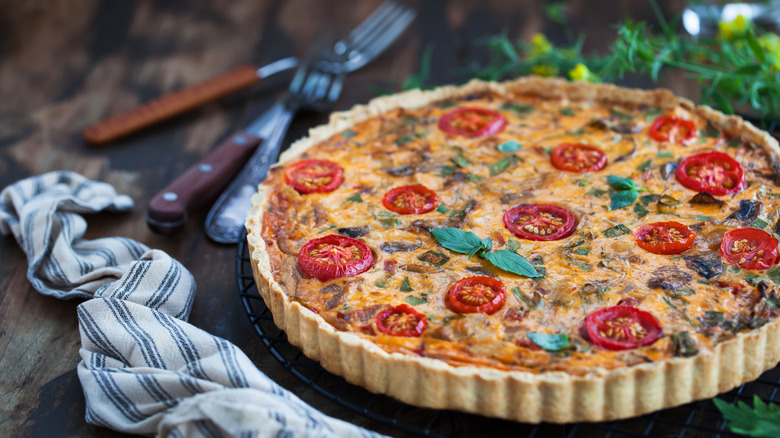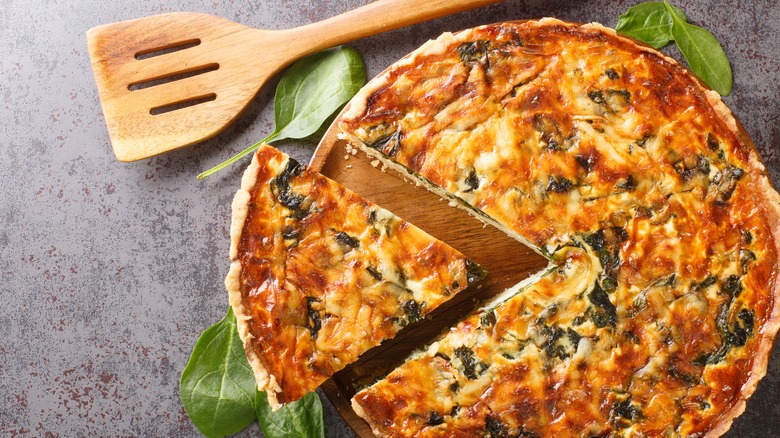Why You Should Underbake Quiche
If you've ever sunk a fork into a warm wedge of eggy, buttery quiche, then you know how tasty this breakfast and brunch stalwart can be. Basically a savory type of pie, quiche features a simple egg custard that's poured into a pastry crust, often topped with other ingredients such as crumbled cheeses, slices of vegetables, or chunks of meat or fish, and baked until just tender on the inside, with a crispy, flaky crust.
Much like sweet pies, quiche seems to have as many iterations as there are imaginations. Quiche Lorraine, said to be the original iteration of the dish that sprung up in medieval Germany (via Importico's Bakery Cafe) features nuggets of smoked bacon, while other versions feature tangy goat cheese or crumbled sausage. But whatever type of quiche you like to make at home, there's one detail you'll want to pay attention to the next time you bake one up, and that's your oven temperature.
Set your oven a little cooler to avoid overcooking quiche
If you've ever made quiche, then you know that this dish, while fairly straightforward, can have its pitfalls. Too often, homemade quiche seems to turn out soggy, or else over-baked and dry. The texture of a perfectly baked quiche should be somewhere in between those two extremes, according to Kitchn: A moist egg custard that stays in place when sliced.
If your quiches tend to be overcooked, even if you're leaving them in the oven for the recommended amount of time, you might want to try a suggestion from Real Simple: lowering your oven temperature. While many quiche recipes call for a hot oven, between 350 and 400 degrees Fahrenheit, this could actually cause your eggy creation to turn out more like a soufflé — ie, puffy (and most likely dry, given the longer bake time of a quiche) — instead of a tender custard. Real Simple recommends dropping your oven's temperature to a moderate 325 degrees Fahrenheit in order to help safeguard the filling's texture.
Exact quiche bake times can be hard to name, since pan sizes vary, but Houston, Texas pastry chef Victoria Dearmond counsels pulling the pie when the filling looks mostly set, but still jiggles a little. "The custard will continue to cook after you take it out of the oven," she told Real Simple. "So if you pull it out when it's still a little underdone, it will be perfectly cooked by the time it cools."

